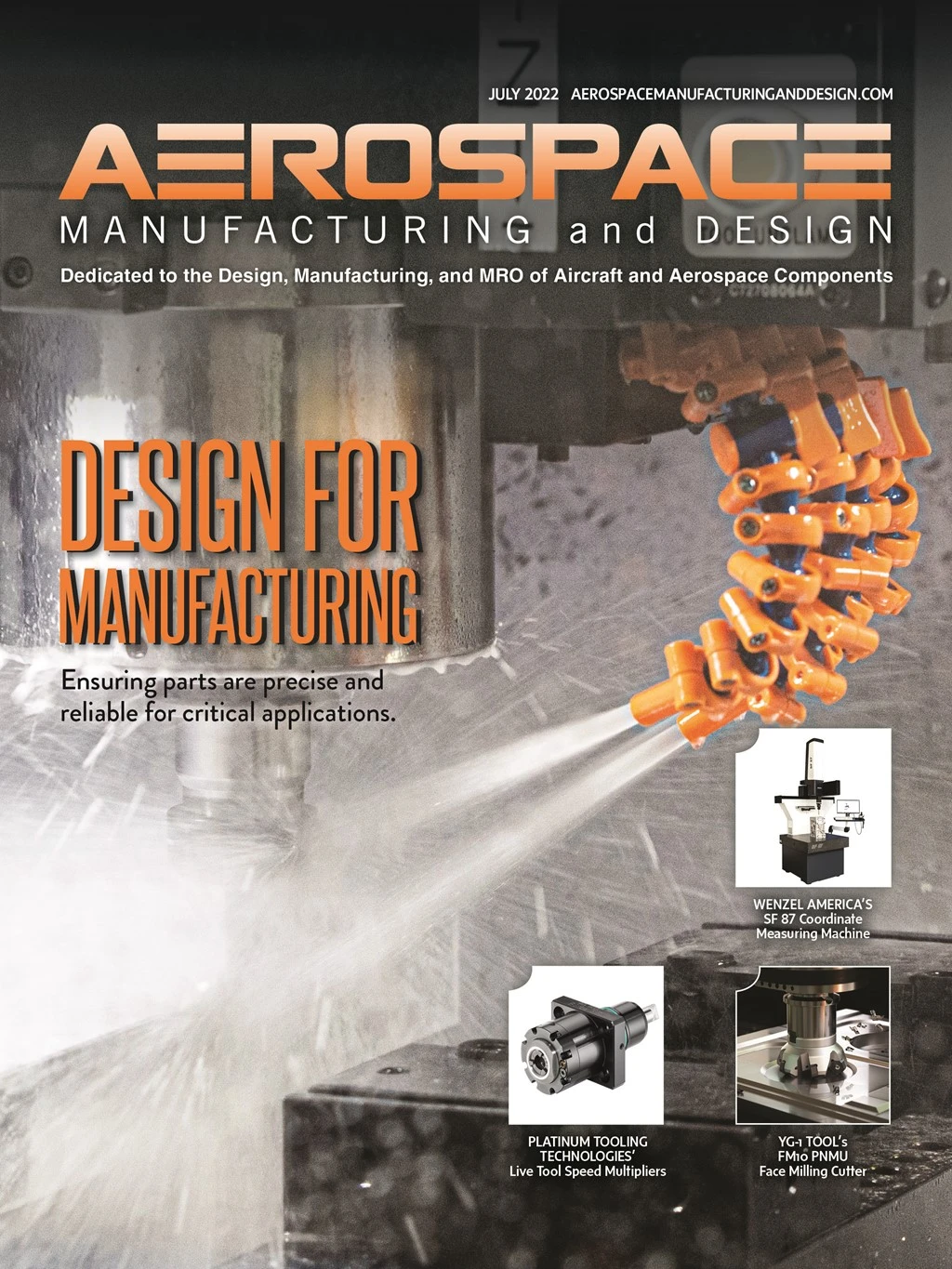
Shutterstock, via Andea Corp.

The aerospace industry faces a perfect storm of new demands, from sustainable aviation and space militarization to satellite communications, that’ll require a radical restructuring of legacy manufacturing systems. The high-speed innovation required to meet rising demand for technologies from satellite broadband constellations to hypersonic weapons and hydrogen-powered aircraft will require rapid modernization of a sector that’s lagged in digital transformation.
This requires creating connected, agile, and adaptable manufacturing that can swiftly integrate and propagate changes across manufacturing lines and a parallel organizational culture comfortable with rapid change. Ultimately, it’ll take learning from sectors such as automotive that have moved from manufacturing models built around scale to cell-based models built around speed and configurability. Aerospace firms that succeed will adopt agile manufacturing processes and models that facilitate risk and rapid innovation.
An accelerating pace of change

The aerospace industry has to fast-forward digital modernization and restructuring to adapt to new markets. The recent pandemic caused a drop in passenger numbers and depressed demand for new aircraft orders, forcing aerospace and defense (A&D) manufacturers to create leaner manufacturing processes and pivot toward emerging technologies and markets. The growing imperative to address Internet blackspots across remote regions and provide a secure resilient backup for terrestrial broadband had the European Union (EU) join the global race to roll out low earth orbit satellite broadband systems. Growing space militarization and the race between China, Russia, and the United States to bolster their extra-terrestrial military presence will grow demand for space technologies from hypersonic weapons to reusable rockets. Space launch services are projected to grow 15.7% year over year.
Climate targets are driving an increased imperative for sustainable aviation innovations with the EU requiring drastic reductions in aviation emissions, creating demand for more fuel-efficient aircraft, sustainable aviation fuels, and new hydrogen and electric aircraft. Airbus is developing a zero-emissions aircraft while the UK Government will develop a hydrogen-fuelled aircraft. Meanwhile, population growth, urbanization, and associated transport congestion is driving demand for advanced aerial mobility systems for city commuters. Cumulatively, the aviation industry is required to bring new innovations to market at a pace which requires accelerated adoption of Industry 4.0 manufacturing. Needing to find efficiency savings is compounded by the impact of the recent pandemic in temporarily reducing demand for aircraft parts and new orders. With A&D customers demanding tougher delivery schedules and customization, there’s a need for agile production and predictive quality controls.
Modernizing a conservative industry

A recent McKinsey report found only 16% of aircraft manufacturers were implementing digital manufacturing initiatives at scale while 44% were still in the early stages. Adoption has been piecemeal, fragmented, and focused on specific short-term applications.
There’s an urgent need for a wholesale digital transformation of aviation manufacturing to help bring new innovations to market faster. Aviation manufacturers must adopt unified solutions linking design, engineering, and manufacturing to reduce design iterations, over-engineering, and manufacturing waste and enable new innovations refined to requirements in real-time.
Real-time data collection and monitoring of activities across end-to-end manufacturing processes also enables production processes to be continually optimized with live data, creating a virtuous circle where manufacturing processes grow smarter. Digitally unifying manufacturing from design to engineering enables vertical integration and ultimately all manufacturing to be brought under one roof. Digitally consolidating data across manufacturing lines enables more efficient manufacturing and end-to-end traceability across parts while driving real-time in-line quality control and calibration of tools and machines.
This is similar to the way automotive manufacturers used connected data to replace fragmented assembly lines with robotic cells and consolidated production processes into a single site. This supports traditional manufacturing processes built around scale to be replaced with models built around speed, accelerating time to market for new innovations. Digitally integrating manufacturing processes facilitates greater control and visibility over production to achieve consolidation. Integrating and unifying product lifecycle management (PLM) and enterprise resource planning (ERP) streamlines manufacturing from design to specifying and sourcing materials, defining and configuring manufacturing steps, ordering and receiving parts, to monitoring progress.
Achieving high-speed digital modernization of manufacturing requires A&D manufacturers to rapidly retrofit legacy systems for Industry 4.0 by adopting interoperable manufacturing execution systems seamlessly integrated with existing tools and technologies. New manufacturing planning and execution systems automatically check with a third-party solution to ensure tools are correctly calibrated in real-time and performing optimally. Open, interoperable manufacturing execution systems enable full traceability of components.
Barcodes or automated scales can update stock levels, scrap, and waste while manufacturing execution systems identify inaccuracies such as missing quantities from a bill of materials while the order is being completed. Feeding live data enables materials sourcing to manufacturing lines to be corrected in real-time. Unified solutions for end-to-end monitoring of manufacturing lines enables unproductive practices or performance bottlenecks to be rapidly identified and removed, accelerating development. This creates more agile manufacturing processes able to adapt to changes quickly with minimal cost overruns or delays.
Digitally integrating manufacturing processes enables changes to be incorporated and propagated rapidly, creating more agile and adaptable production. This encourages a manufacturing mindset conducive to change, experimentation, and innovation. The aircraft manufacturing industry must adopt flexible manufacturing processes that accommodate high-speed innovation and accelerate speed to market.

Explore the July 2022 Issue
Check out more from this issue and find your next story to read.
Latest from Aerospace Manufacturing and Design
- Archer Aviation, Palantir partner on next-gen aviation
- Fairlane Products’ TG GripSerts and accessories for low-profile clamping
- Boeing to build US Air Force’s sixth-generation fighter jet
- Sandvik Coromant introduces CoroMill Plura barrel
- #54 - Manufacturing Matters - HMI Solutions for EV Industry from EAO
- Aerospace Industry Outlook returns for spring 2025
- Drop in for an interactive webinar on automation in manufacturing
- SW’s wing rib technology for the aerospace industry






